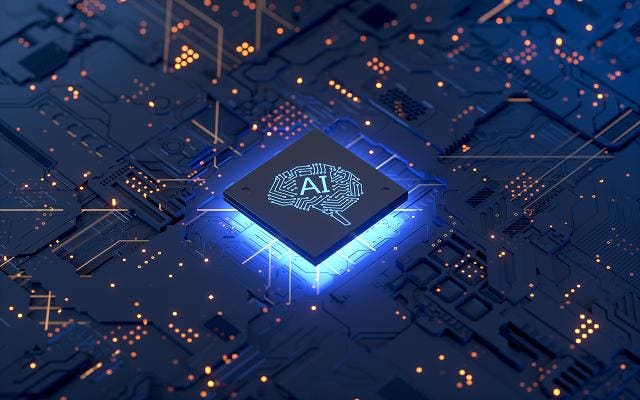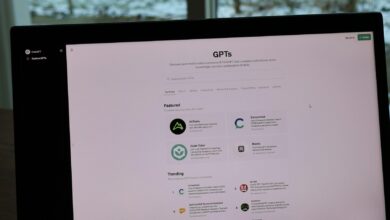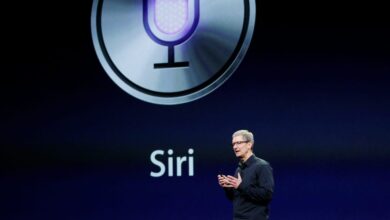How Creative AI Could Impact Businesses

Artificial Intelligence
An AI-generated portrait selling for nearly half a million dollars. An iconic rock band returning – in some cases from beyond the grave – with an assist from AI to create a new hit song. Video game studios using AI to create new maps for players to explore.
It seems Generative AI encroaches on a new creative field every day. What once was seen as a blunt tool for automating simple, rote tasks turns out to be much more skilled at replicating human creativity than most imagined, with implications not just for workers in creative fields, but anyone whose work requires any level of imaginative thought. This includes most knowledge workers and executives.
Many workers feel threatened by this, but they shouldn’t shy away from embracing generative AI. Rather than coming for their jobs, generative AI will offer a helping hand, acting as more of an assistant than a replacement for workers in even the most creative roles.
For now, about three-quarters of adults across all age groups still prefer to talk to human agents rather than AI chatbots, according to a recent Prosper Insights & Analytics survey. This is true whether people need help with banking services, healthcare matters, online shopping, telecom and entertainment services, or travel. People want to interact with other people because they’re far more context-aware than any chatbot. This is the same reason why creative workers shouldn’t worry about AI encroaching.
Prosper – Prefer To Communicate With Live Person or AI Chat Program
Why a human in the loop matters more than ever
Today’s AI, even the most impressive models, lacks direction, contextual awareness, reasoning, and a host of other human skills that enable people to connect their work to market opportunities. While generative AI’s ability to spin up images, text, and video from a few written prompts is undoubtedly profound, it can’t do much without a person telling it what to do.
Furthermore, we’re starting to see limitations in what these models can do. Image generators continue to make common errors based on their lack of understanding of basic physics and anatomy, which humans intuitively understand, and text tools will confidently assert information that is not factual. For these reasons, enterprises are urging employees to think of the output of generative AI tools as a starting point rather than a finished product.
We see this reflected in how people are using generative AI tools. Across all age groups, the most commonly cited use for AI is research (46% for all adults over age 18), according to a recent Prosper Insights & Analytics survey. Far lower on the list, at 25.7% of respondents, is content creation. This suggests that people feel confident using AI to inform their work and maybe even give a helping hand in its initial shaping, but it still takes a human touch to put the final polish on a work.
Prosper – Use ChatGBT For
In this context, it makes sense to view generative AI as a tool for creativity rather than a replacement for creative people. AI tools still need a person in the driver’s seat, directing them. They need a person with an understanding of the business, its go-to-market strategy, its customers’ needs, its internal policies and procedures, among many other pieces of context to produce effective collateral.
Beena Ammanath, Executive Director of the Global Deloitte AI Institute at Deloitte says that “Executives and technology leaders should understand that the most productive uses of Generative AI won’t be about replacing people and cutting corners, but instead will focus on arming employees with tools that help them advance and enhance their productivity, knowledge, and creativity. Creative technology like Generative AI requires constant collaboration with creative human talent, and the enterprises who prioritize this relationship will come out on top.”
For example, generative AI tools may be good at producing social media posts for marketing teams, but they need a person telling them what channels to target, what the brand presence looks like, who their customers are, and how their product is different from their competitors.’ AI tools also need people in the loop to correct any errors in their output.
AI’s potential impact on hiring
That said, the creative capabilities of generative AI tools will likely change the way businesses get work done. Perhaps the most significant impact of AI on creative endeavors may be eliminating skill as a requisite for creative expression. You no longer need to master a particular image editing software package to create stunning digital art. You don’t need encyclopedic knowledge of multiple coding languages to build engaging websites. You don’t need years of music training to produce a catchy song. In a world where technical skill is decoupled from the ability to produce something, creativity can flow at the speed of thought, and whoever has the most interesting ideas will likely reap the greatest rewards.
As Mike Bechtel, Chief Futurist at Deloitte Consulting puts it, “Pioneers see generative AI not as an excuse to do the same work with fewer people, but as an opportunity to do new and improved work with the same people.” This may change the type of people businesses hire and skills they want to see on a resume. In the past, job postings looked like shopping lists, with bullet point after bullet point of specific skills required by the position, particularly for technical roles. Going forward, there may be a greater emphasis on a candidate’s ability to think critically and creatively about how to connect the power of AI tools to real business problems.
The reason is simple. If you give an image generator a boring prompt, it will return a boring image. But if you give it a more imaginative prompt, it will return something compelling, maybe even inspiring. Businesses are likely to start looking for people who can demonstrate that they understand the business context and have creative ideas for driving competitive advantage more so than people who have a lengthy list of skills.
Expect executives to be particularly affected by this trend. It used to be that executives were hired and compensated according to their ability to follow the data. Make no mistake, data-driven decision making will remain as important as ever, particularly at the executive level. But we’re likely to see a new generation of leaders who build their careers on their creative vision. Executives who can imagine creative ways to arm their employees with AI-driven superpowers could see their businesses – and their careers – leapfrog their competition.
Beyond AI
It may seem like the tech world revolves around generative AI right now. But leaders shouldn’t lose sight of the other technologies needed to take full advantage of the AI revolution. AI trains best on structured, labelled data, so a formal approach to data management is a key foundation. Cloud platforms provide critical scaling capacity. At an even higher level, leaders should be mindful of how AI tools fit within their broader digital transformation goals. As transformative as AI feels today, there are potentially even more impactful technologies coming our way, like quantum computing, which leaders should be prepared for.
Today we hear a lot of people – whether it’s vendors pitching AI tools or the technology’s cheerleaders in the popular press – suggesting that you can simply throw AI at whatever problem you have. Savvy business and technology leaders will recognize that, no matter how transformational AI’s capabilities seem today, it’s merely one tool among many. Understanding where it fits within your organization’s broader technology priorities will be key to driving the greatest returns from it.



